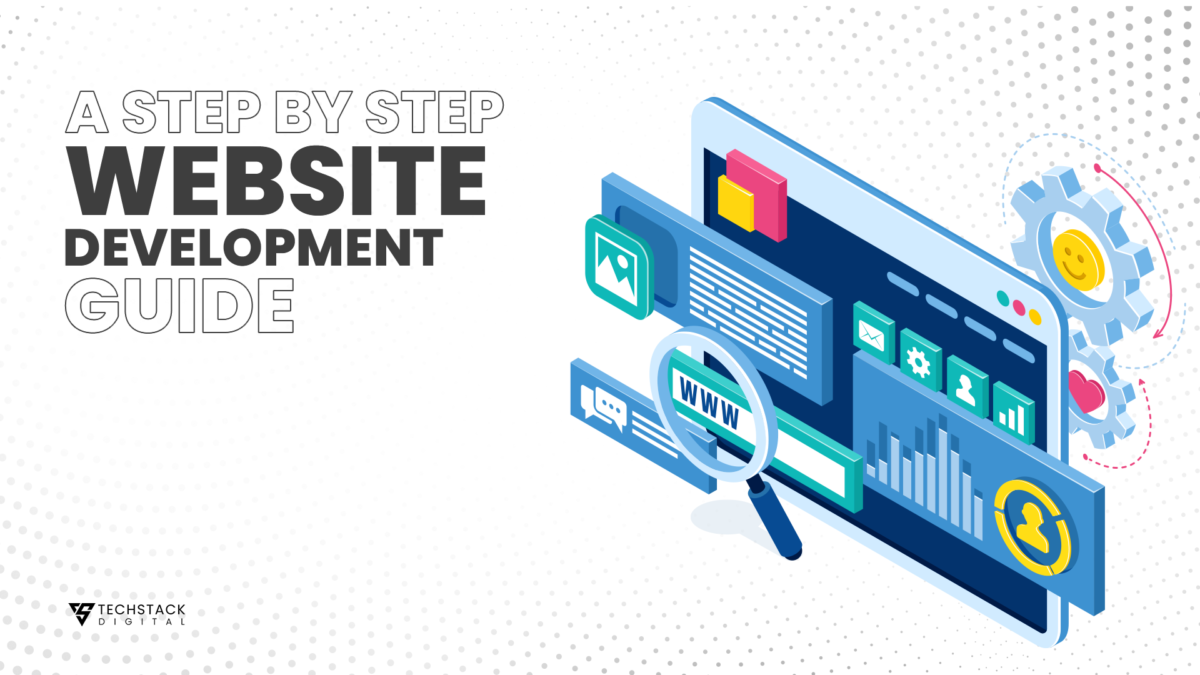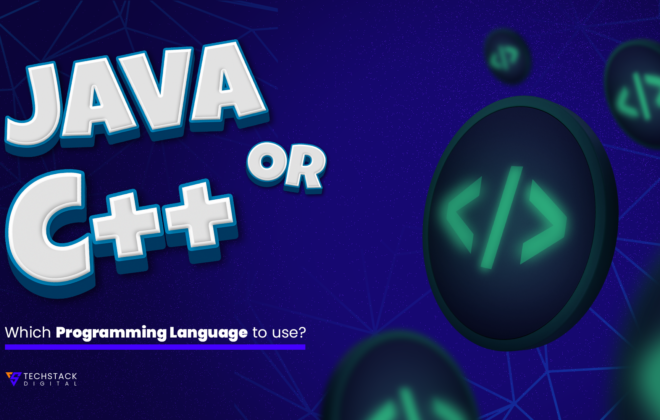The Ultimate Guide to Web Development for Beginners
What is web development.
Web development, also known as website development, basically refers to creating, building, and maintaining websites and web applications that you see every day on the internet. However, web development is not just limited to this. It also includes web designing, web programming, and database management.
There is a very close relationship between web development and web design i.e. designing apps’ features and functionality. The term “development” generally refers to the actual construction of these components, which involves programming sites.
Types of web development
Web development is the process of creating websites and web applications that run on the Internet. Web development can be divided into three main types: front-end, back-end, and full-stack.
Let’s take a closer look at what they are and what they do.
Front-end web development
Front-end web development involves designing and coding the user interface of a website or web application. Front-end web developers use languages such as HTML, CSS, and JavaScript to create the layout, appearance, and functionality of web pages. It also uses frameworks and libraries such as Bootstrap, React, and Angular to enhance their work.
Back-end web Development
Another type of web development is back-end.
Back-end development involves creating and managing the server-side logic and data of a website or web application. Back-end developers use languages such as PHP, Python, Ruby, and Java to interact with databases, APIs, and other web services. They also use frameworks and tools such as Laravel, Django, Rails, and Node.js to simplify their work.
Full-Stack web development
Then comes the full-stack developers. Full-stack web development involves both front-end and back-end development. It can work on both the client side and the server side of a website or web application. Full-stack developers have a broad knowledge of web technologies and can handle all aspects of web development.
What skills do you need to be a web developer?
Now that you know different types of web development let us talk about the skill set needed to be a web developer.
Web development is a field that needs many skills to make a good website. The most important skill is knowing how to write code in different languages. HTML is the basic language that gives the shape of a webpage, while CSS makes it look nice. JavaScript is a language that makes websites do things and change according to the user.
Another important skill for web development is knowing how to make websites fit on different devices and screens. Websites should look good and work well on phones, tablets, laptops, and desktops. To do this, developers use tools like Bootstrap and SASS or LESS that help them design websites faster and better.
knowing how to store and use data is another very important skill for web development. Data is information that websites need to work on, like usernames, passwords, messages, etc. Developers use databases like SQL or NoSQL to keep data safe and organized. They also use languages like PHP, Python, Ruby, or Node.js to make websites talk to databases and do things with data.
Moreover, knowing how to work with other developers is also an important skill. Developers often work in teams on big projects, so they need tools like Git that help them share code and track changes. They also need to know how to protect data from hackers and bad people. They should know methods like passwords, encryption, and best practices to keep data secure.
Lastly, knowing how to learn new things is another important skill. Web development changes a lot, so developers need to keep up with new technologies and trends. They need to know how to use APIs (Application Programming Interfaces) that let them connect their websites with other services, like maps, weather, etc. They also need to know how to use frameworks like React, Angular, and Django that make web development easier and faster.
To sum up, web developers need many skills. Developers need to know how to write code in different languages, make websites fit on different devices and screens, store and use data, work with other developers, protect data from hackers, and learn new things. These skills are all important for making good websites.
Let us now move towards the phases of web development.
There are 7 phases of web development. What are they? you’ll find them in a minute.
7 phases of web development
Making a website is not very simple. You need to do different things depending on what kind of website you want, what languages you use, and what you have. Here are some steps you need to follow to make a website.
Make a plan.
Before you start your web development project, you need to talk to the people in your organization and make a plan for your website. Here are some questions to think about before you make your first draft:
- What do you want your website to do?
- Who are the people who will use your website, and what do you want them to do on your website?
- What kind of website are you making? (for example, a simple website with information, a website where people can join and do things, or a website where people can buy things)
- What kind of things will you put on your website, and how much?
- Why are you putting these things on your website?
- How will you arrange your website so that people can find what they want easily?
- How much money can you spend?
Answering these questions will help you work with your web development, marketing, and finance teams to decide what is important and how to do it.
It is always better to make a plan at the start than to change your website later when you have problems.
Make a sketch.
Once you are done with your plan, Move towards its sketch.
All good websites start with a sketch. Developers call this a wireframe. It is not a real document; it is just a picture of your website that will help you and your developers know what you want. You can draw it on a board or use a tool like Invision, Slickplan, or Mindnode. Wireframes are tools that will help you see where words and pictures will go on each webpage. You can use empty boxes and fake words to see how your things will look on the screen. Work with your developer to make wireframes so that they know what you are thinking.
Write your site code.
The next step in making a website is writing the code.
Developers use different languages to make different parts of websites, like how they look, work, and what they do. These languages work together to build up and run your website.
Make the back end of your website.
Writing code is not the only thing you need to do to make your website. You also need to build the back-end and front-end parts of your website.
Let’s start with the back end.
The back-end is the part that handles the data that makes your website work. For example, Facebook’s back-end keeps my photos, so that the front-end can show them to other people. It has two main parts:
Database
Databases are where you store, organize, and process data so that you can get it when you need it.
Servers
Servers are the machines and programs that run your website. Servers are what send, process, and receive data requests. They are like the middleman between the database and the browser. The browser will ask the server for something, like “I want this information”, and the server will know how to get that information from the database and send it to the browser.
These parts work together to make the base for your website.
To make a website’s back-end, developers will need three things.
- Your logic code, which is a set of rules for how your website will answer requests and how things on your website will interact.
- Your database management, which is how your website will keep, manage, and get its data.
- Your infrastructure, which is how your site will be hosted. Hosting your own site will give you more control, but it costs more money and needs more work. You need to take care of your server’s health and safety.
With these parts and choices in place, your website will be ready for front-end development.
Note: The back end is not always needed for making a website. You only need a back-end if you need to keep data that users enter on your site.
Facebook, for example, needs to know who my friends are, what events I joined, what posts I made, and more. This is all “data” that lives in a database. If they didn’t have a back-end with a database, they couldn’t get this data.
On the other hand, a website that only has information and doesn’t need users to enter any data doesn’t need a back-end.
Make the front end of your website.
With the back-end all set now it is time for the front-end fun.
If you have ever played with web design or made a website in WordPress, Squarespace, or Google Sites, you did some front-end web development.
The front-end stuff is important. it’s what your visitors, customers, and users see and how they use your website.
Front-end (or client-side) development uses a mix of JavaScript, HTML, and CSS. It also controls things like fonts, colors, navigation, position, and how your site looks and works on different devices and screens. This part will show more of your first site idea and what you put in your wireframe.
Get a domain name.
At this point, your website will have an IP address but that’s not enough. It also needs a domain name, a name for your website that your visitors can use to find your site.
sites like GoDaddy and Hover help you buy a domain name and register with ICANN (Internet Corporation for Assigned Names and Numbers). Most domain registrations are good for a year before you need to renew.
Some website makers and hosting services, like WordPress and Squarespace, also let you buy a domain name.
Launch your site.
Once you have a domain name and have it linked to your host, you’re almost ready to show your work to the web.
But wait — there are still some things you need to check before you launch. These include planning out who will do what on your team, testing your site for any problems, making it good for SEO, and a final check before making your site live.
Still finding it hard to make your own website and need expert opinions? Don’t worry we have got you covered. We have a dedicated team of web developers and consultants who can assist you with any web development project.
Whether you need a simple landing page or a complex e-commerce site, we have the skills and experience to make it happen. Contact us today with your project details and let us turn your vision into reality.




